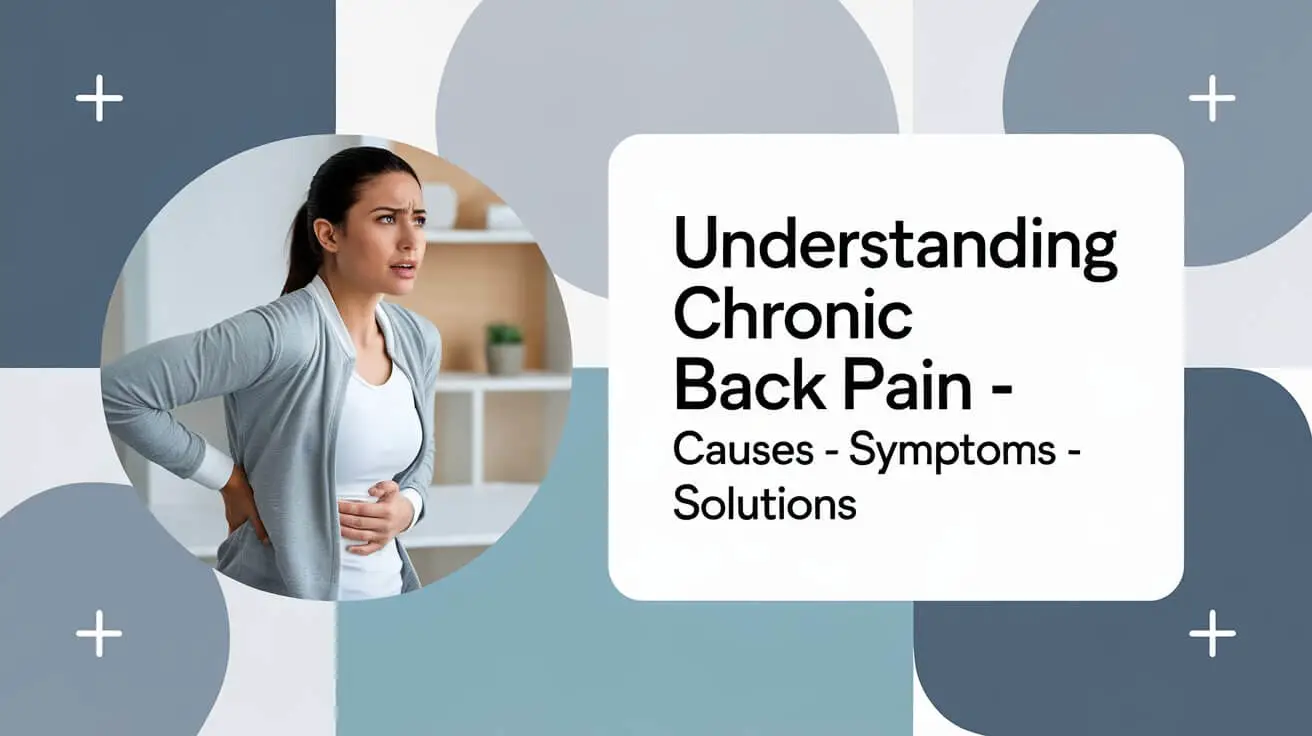If you are living with chronic back pain, you know how it can affect every part of your life. I’ve experienced this firsthand. For months, I struggled with discomfort that wouldn’t go away, no matter how much I rested or adjusted my daily habits. It took time, research, and guidance from professionals to understand the root causes and find practical solutions that helped me feel better.

In this article, I’ll break down what chronic back pain is, its common causes and symptoms, and effective ways to manage or overcome it.
What Is Chronic Back Pain?
Chronic back pain is pain that lasts for 12 weeks or longer, even after the initial injury or cause has healed. Unlike acute pain, which is temporary and often due to a specific event, chronic pain persists and can significantly impact your quality of life.
For me, the turning point was realizing that my pain wasn’t just going to go away on its own. I had to take a closer look at what might be causing it and actively work toward finding relief.
Common Causes of Chronic Back Pain
Understanding the cause of your pain is the first step toward finding relief. Chronic back pain can result from several factors:
1. Herniated or Bulging Discs
The discs in your spine act as cushions between the bones. When these discs bulge or rupture, they can press on nerves and cause pain.
2. Degenerative Disc Disease
As we age, the discs in our spine naturally lose their flexibility and cushioning. This can lead to chronic pain, especially in the lower back.
3. Muscle or Ligament Strain
Overuse or improper movement can cause small tears in muscles or ligaments, leading to ongoing discomfort.
Personal Insight: I realized my pain was partly due to poor posture and lifting heavy objects incorrectly. Small daily habits like this can have a big impact over time.
4. Spinal Conditions
Conditions like scoliosis, arthritis, or spinal stenosis (narrowing of the spinal canal) can lead to chronic pain.
5. Nerve Issues
Sciatica, which occurs when the sciatic nerve is compressed, is a common cause of chronic lower back pain.
6. Lifestyle Factors
A sedentary lifestyle, obesity, or even chronic stress can contribute to back pain by weakening muscles or causing tension.
Symptoms of Chronic Back Pain
Chronic back pain can feel different for everyone. Some common symptoms include:
- Persistent pain that doesn’t improve with rest
- Sharp or shooting pain, especially in the legs (sciatica)
- Stiffness in the back, making movement difficult
- Pain that worsens with certain activities, like bending or standing
In my case, the pain was a constant dull ache in my lower back that occasionally flared up into sharper discomfort when I sat for long periods.
Solutions for Chronic Back Pain
1. Exercise and Physical Therapy
Movement is often the best medicine for chronic back pain. Strengthening your core and improving flexibility can support your spine and reduce pain.
What Worked for Me: Yoga and targeted exercises like planks helped me build strength without overloading my back. A physical therapist also taught me specific stretches to release tension.
2. Improve Your Posture
Slouching or sitting in awkward positions puts extra strain on your back. Paying attention to your posture throughout the day can prevent pain from worsening.
Tip: I invested in an ergonomic chair for work and adjusted my desk setup so that my computer screen is at eye level.
3. Heat and Cold Therapy
Applying a heating pad or ice pack can provide temporary relief. Heat relaxes tight muscles, while cold reduces inflammation.
What Worked for Me: A heating pad was my go-to during colder months when my back felt especially stiff.
4. Medication and Injections
Over-the-counter pain relievers like ibuprofen can help manage occasional flare-ups. For more severe cases, doctors may recommend corticosteroid injections to reduce inflammation.
5. Mind-Body Practices
Chronic pain can take a toll on your mental health. Techniques like meditation, deep breathing, and mindfulness can help you manage pain and reduce stress.
6. Alternative Therapies
Acupuncture, chiropractic care, or massage therapy may provide relief for some people. While these didn’t completely solve my issues, they were helpful as part of a larger plan.
7. Weight Management
Extra weight puts added pressure on your spine. Maintaining a healthy weight can reduce strain and prevent pain.
8. Surgical Options
In rare cases, surgery may be necessary if other treatments don’t work. This is usually reserved for severe conditions like herniated discs or spinal stenosis.
Tips for Managing Chronic Back Pain
- Stay active, but avoid movements that aggravate your pain.
- Use a supportive mattress and pillow for better sleep posture.
- Take breaks during long periods of sitting or standing.
- Focus on building core strength to stabilize your spine.
When to See a Doctor
While many cases of chronic back pain can be managed at home, it’s important to seek medical advice if:
- Your pain is severe or getting worse
- You experience numbness or weakness in your legs
- Pain occurs after an injury
- You have trouble controlling your bladder or bowels
Conclusion
Chronic back pain can feel overwhelming, but understanding its causes and taking proactive steps can make a big difference. For me, it was a journey of trial and error. What worked best was combining exercises, better posture, and stress management into my daily routine.
If you’re dealing with ongoing back pain, don’t ignore it. Small changes, consistency, and professional guidance can help you find relief and improve your quality of life.
